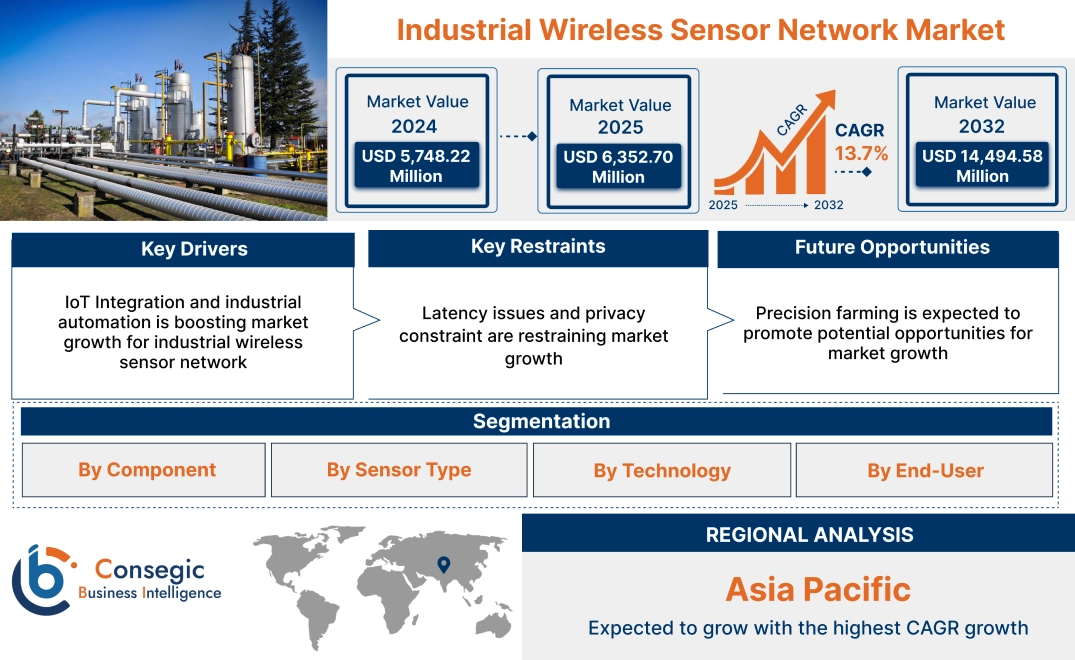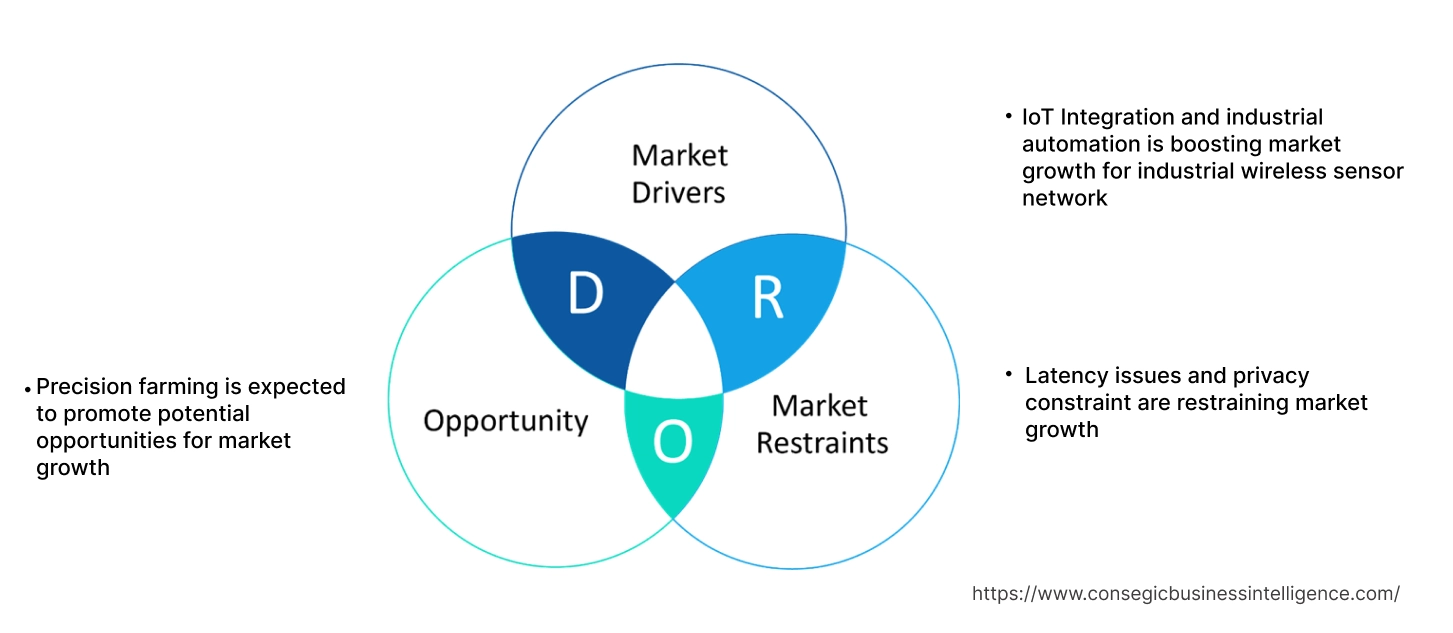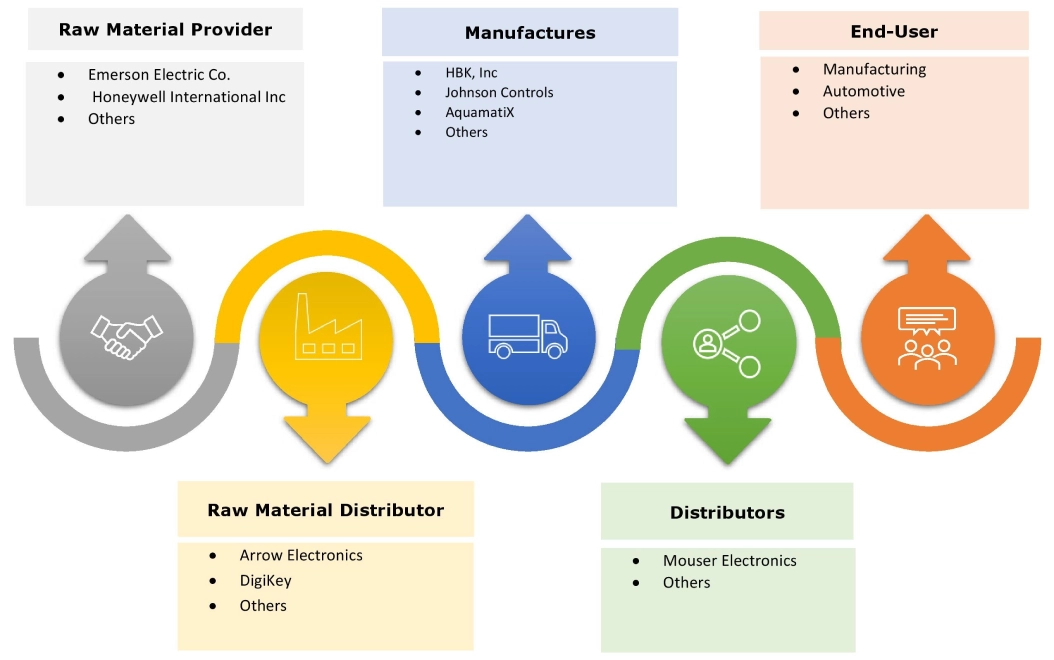Industrial Wireless Sensor Network Market Size:
Industrial Wireless Sensor Network Market is estimated to reach over USD 14,494.58 Million by 2032 from a value of USD 5,748.22 Million in 2024 and is projected to grow by USD 6,352.70 Million in 2025, growing at a CAGR of 13.7% from 2025 to 2032.
Industrial Wireless Sensor Network Market Scope & Overview:
Industrial wireless sensor network refers to a collection of interconnected devices that are designed to communicate wirelessly for monitoring and controlling various industrial processes. Moreover, wireless sensor networks help in gathering real-time data while allowing remote monitoring and facilitating seamless communication among industrial machines and systems within industrial facilities. Moreover, industrial wireless sensor networks offer a broad range of benefits such as real-time monitoring & control, reduced downtime, enhanced product quality, improved safety & productivity, remote accessibility, increased production efficiency, and others.
Industrial Wireless Sensor Network Market Dynamics - (DRO) :
Key Drivers:
Rising adoption of industrial automation in manufacturing sector is propelling the industrial wireless sensor network market growth
Industry 4.0 enabled manufacturing represents automation readiness, extreme flexibility, minimal human intervention, and highest productivity. It emphasizes the use of automation and automated equipment to enhance production efficiency and flexibility. Moreover, industrial wireless sensor network is increasingly integrated into manufacturing facilities for applications involving predictive maintenance of equipment, real-time monitoring of production lines, and seamless communication among different machines. This results in enhanced productivity, reduced equipment downtime, and improved product quality. As a result, the rising adoption of industrial automation in manufacturing sector is further driving the market. Thus, as per the analysis, the growing manufacturing sector and rising adoption of industrial automation are driving the utilization of industrial wireless sensor network, in turn proliferating the industrial wireless sensor network market size.
Key Restraints:
High initial investment and operational limitations are restraining the industrial wireless sensor network market expansion
High initial investment and operational limitations associated with wireless sensor network is among the primary factors restraining the market growth. The upfront costs associated with acquisition of wireless sensor network hardware/equipment, software, along with integrating them into existing facilities can be significantly high, which may cause financial barriers, particularly for smaller businesses or businesses operating on tighter budgets.
Additionally, wireless sensor network is associated with certain operational limitations such as limited communication range, bandwidth limitations, scalability issues, and security vulnerabilities among others. Hence, the high initial investment and operational limitations related to wireless sensor network are restraining the market.
Future Opportunities :
Precision farming is expected to promote potential opportunities for market growth
Industrial wireless sensor network plays a vital role in precision agriculture, particularly in applications such as soil moisture assessment, climate monitoring, environmental monitoring, greenhouse monitoring, pest detection & management, irrigation management, and nutrient management among others. Moreover, wireless sensor network can provide real-time monitoring and control of several parameters in agricultural fields, including soil moisture, temperature, pH levels, and others. Thus, as per the analysis, the growing precision farming sector is projected to increase the adoption of wireless sensor network for real-time monitoring and control of several parameters in agricultural fields, in turn boosting the industrial wireless sensor network market opportunities during the forecast period.
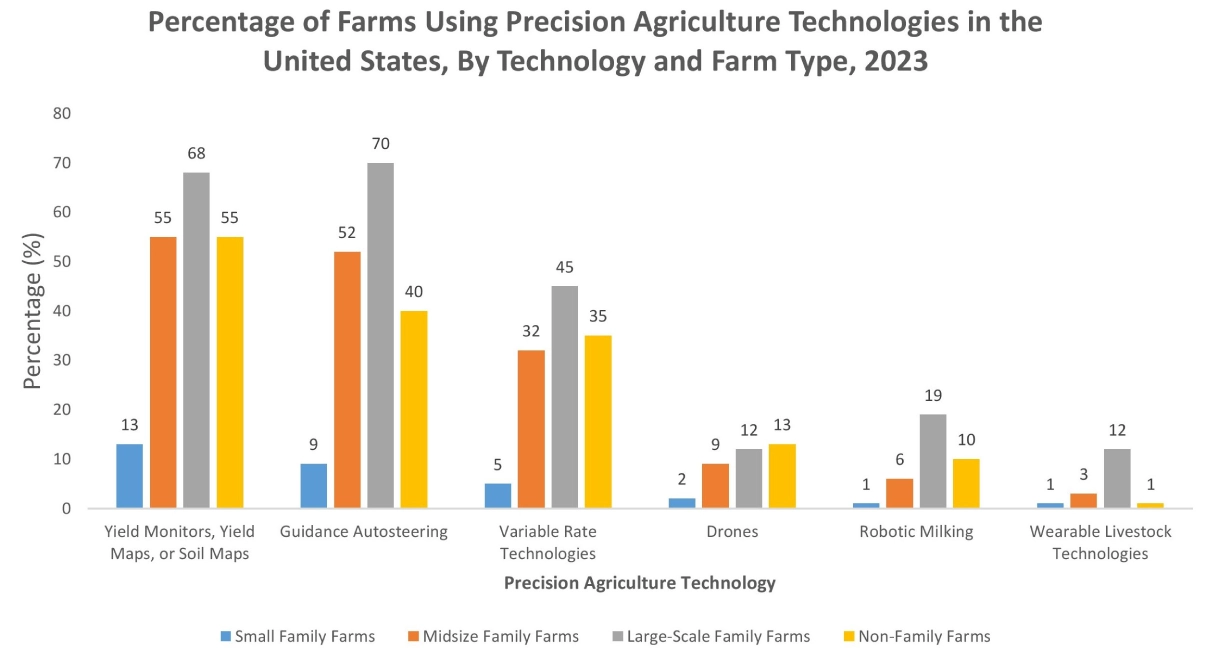
Industrial Wireless Sensor Network Market Segmental Analysis :
By Component:
Based on component, the market is segmented into hardware, software and service.
Each component plays a crucial role in enabling seamless operation, data transmission, and monitoring across wireless sensor networks. The key hardware components used in wireless sensor network include sensors, transceivers, power sources, transducers, and others. Moreover, software includes the collection of programs, algorithms, and protocols that enable the communication, operation, data processing, and management of wireless sensor networks. Additionally, the service segment incudes of consulting, integration, deployment, and support services for facilitating.
Trends in the component:
- Increasing technological advancements associated with wireless sensor network components such as sensors, transceivers, and others.
- The rising trend towards adoption of cloud computing in wireless sensor network software is driving the market.
Hardware segment accounted for the largest revenue share of 52.40% in the overall market in 2024.
The primary hardware components used in wireless sensor network include sensors, transceivers, transducers, and others. Sensors are used for collecting data from the surrounding environment, such as temperature, humidity, and others of the wireless network it is connected to. Moreover, transceiver is primarily used to enable communication among sensor nodes or between a sensor node and a base station. According to the industrial wireless sensor network market analysis, rising advancements associated with sensor network hardware components are driving the industrial wireless sensor network market size.
Software segment is anticipated to register fastest CAGR growth during the forecast period.
Software segment mainly includes the programs and protocols that are designed to drive the functionality of sensor nodes connected within the wireless sensor network. The key components of the software structure include the operating system and network protocol software. Moreover, several modern wireless sensor networks are powered by cloud software for extending their adaptation, analytics, and automation capabilities among others. Therefore, the increasing advancements associated with wireless sensor network software are anticipated to drive the market during the forecast period.
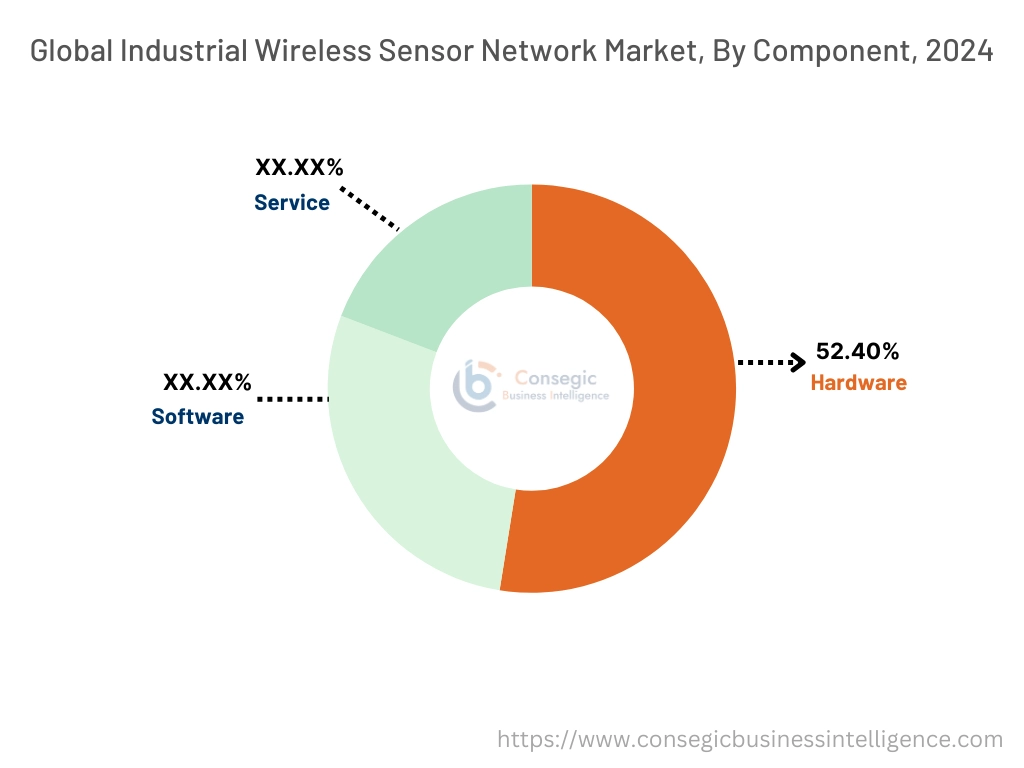
By Sensor Type:
Based on sensor type, the market is segmented into pressure sensor, proximity sensors, temperature sensor, liquid sensors, movement sensors, level sensor, and others.
In wireless sensor networks, pressure sensors are used for monitoring and transmitting real-time data on pressure levels in tanks, pipelines, reactors, hydraulic systems, and other industrial systems for process control, safety, and leak detection. Temperature sensors are used for providing real-time data for overheating detection, process monitoring, and environmental control in industries such as manufacturing, food processing, pharmaceuticals, and others. Moreover, liquid sensors are used for applications involving leak detection, fluid identification, quality monitoring, and others across industrial sectors such as chemicals, water treatment, and other sectors. Additionally, level sensors are used for facilitating liquid level monitoring, leak detection, and process automation within industrial facilities.
Trends in the sensor type:
- Rising trend towards adoption of advanced technologies for precise fluid and gas pressure monitoring and detecting leakages is driving the adoption of pressure sensors in oil & gas sector.
- Increasing utilization of temperature sensors in wireless sensor network to ensure optimum temperature in controlled industrial environments and enhance safety within industrial facilities.
Temperature sensor segment accounted for the largest revenue in the total industrial wireless sensor network market share in 2024.
Temperature sensors are used for measuring the temperature of an object or environment. The integration of temperature sensors in wireless sensor networks facilitates constant measurement of the temperature of equipment and materials used within industrial facilities to detect overheating and prevent failure. Moreover, temperature sensors also assist in ensuring optimum temperature in controlled industrial environments and enhance safety within industrial facilities. Therefore, rising developments associated with wireless temperature sensors are driving the market.
Level sensor segment is anticipated to register substantial CAGR growth during the forecast period.
Level sensors are used for detecting the level of liquids and other fluids that exhibit a clear upper surface. Moreover, the integration of level sensors in wireless sensor networks facilitates liquid level monitoring, leak detection, and process automation within industrial facilities. Level sensors can assist in tracking the level of liquids in tanks, reservoirs, and pipelines along with automatically controlling the valves, pumps, and other equipment based on tank or vessel levels. Hence, the increasing advancements related to level sensors are projected to drive the industrial wireless sensor network market growth during the forecast period.
By Technology:
Based on technology, the market is segmented into near field communication (NFC), Wi-Fi, Bluetooth, ZigBee, cellular network and others.
The above technologies are used for providing reliable and high-speed wireless connectivity among wireless sensor networks involving a wide range of sensor nodes and industrial systems. Near field communication refers to a short-range, contactless wireless communication technology that enables data exchange over short distances, typically up to 10 centimetres. Meanwhile, Bluetooth refers to a wireless communication technology that is designed for short-range data exchange among devices, typically up to 10-100 meters, and it usually features low power consumption. Additionally, ZigBee is a wireless communication technology that offers several features such as low-power consumption and short to medium-range communication.
Trends in the technology:
- Rising adoption of IoT communication technologies including Wi-Fi, Bluetooth, ZigBee, and others to facilitate seamless data sharing and communication among several sensor nodes is driving the market.
- Rising trend in adoption of Wi-Fi technology, attributing to its several benefits including high data rates, flexible deployment, improved scalability, remote accessibility, and others.
Wi-Fi segment accounted for the largest revenue in the overall industrial wireless sensor network market share in 2024, and it is anticipated to register the fastest CAGR growth during the forecast period.
Wi-Fi technology is commonly used in wireless sensor networks for providing robust, flexible, and high-speed wireless connectivity for a wide range of sensor types and industrial systems. Additionally, Wi-Fi technology offers various benefits including high data rates, wide availability and standardization, flexible deployment, improved scalability, remote accessibility, and others, which are key determinants for increasing its adoption in wireless sensor networks. Therefore, increasing adoption of Wi-Fi technology in wireless sensor networks is driving the industrial wireless sensor network market trends.
By End-User:
Based on the end-user, the market is segmented into automotive, food and beverages, manufacturing, mining, healthcare, oil & gas, energy & utilities and others.
Wireless sensor networks are used in food & beverage sector for several applications such as monitoring storage and process temperatures and humidity, automating environmental controls in food & beverage storage and production, and others. Similarly, it is used in manufacturing sector for applications involving real-time monitoring of production lines, predictive maintenance of equipment, and seamless communication among different machines. Additionally, it is often used in mining sector for monitoring environmental parameters of underground mines along with tracing the location and health conditions of miners to enhance safety. Wireless sensor networks are also used in for oil & gas sector to enable remote monitoring of pipelines, identify natural gas leaks, and monitor equipment condition, corrosion, and real-time monitoring of offshore/onshore sites among others. Further, can also be used in energy & utilities sector for monitoring power grid conditions such as current, voltage, and others, tracking usage patterns, and automating substation and distribution network monitoring among other applications.
Trends in the end-user:
- Rising trend in adoption of industrial automation in manufacturing sector is among the primary factors driving the market.
- Growing integration of wireless sensor network in oil & gas facilities to reduce equipment downtime, enhance productivity, and increase operational efficiency.
Manufacturing segment accounted for the largest revenue share in the total market share in 2024.
Wireless sensor network is primary integrated in manufacturing facilities for applications involving predictive maintenance of equipment, real-time monitoring of production lines, and seamless communication among different machines. Additionally, the increasing development of smart factories and technological advancements in manufacturing sector such as industrial internet of things (IIoT), IoT analytics, artificial intelligence (AI), and others has further propelled the industrial wireless sensor network industry. Thus, according to the analysis, the rising adoption of industrial automation in manufacturing facilities is propelling the industrial wireless sensor network market trends.
Oil & gas segment is anticipated to register fastest CAGR growth during the forecast period.
Wireless sensor networks are mainly used in the oil & gas sector for facilitating remote monitoring of pipelines, natural gas leaks, equipment condition, corrosion, and real-time reservoir status among others. Moreover, the oil & gas sector leverages the wireless sensor network for facilitating remote monitoring of oil & gas processes and predictive maintenance of equipment in harsh and hazardous locations. Additionally, the integration of IoT into smart pipeline monitoring system along with expanding offshore drilling are propelling the adoption of wireless sensor network in oil and gas sector.
Further, factors such as the development of oil refineries, increasing exploration of gas resources, and the rising need for efficient wireless sensor modules in oil & gas plants are significant aspects driving the segment development. Thus, according to the analysis, the above factors are expected to boost the market during the forecast period.
Regional Analysis:
The regions covered are North America, Europe, Asia Pacific, the Middle East and Africa, and Latin America.
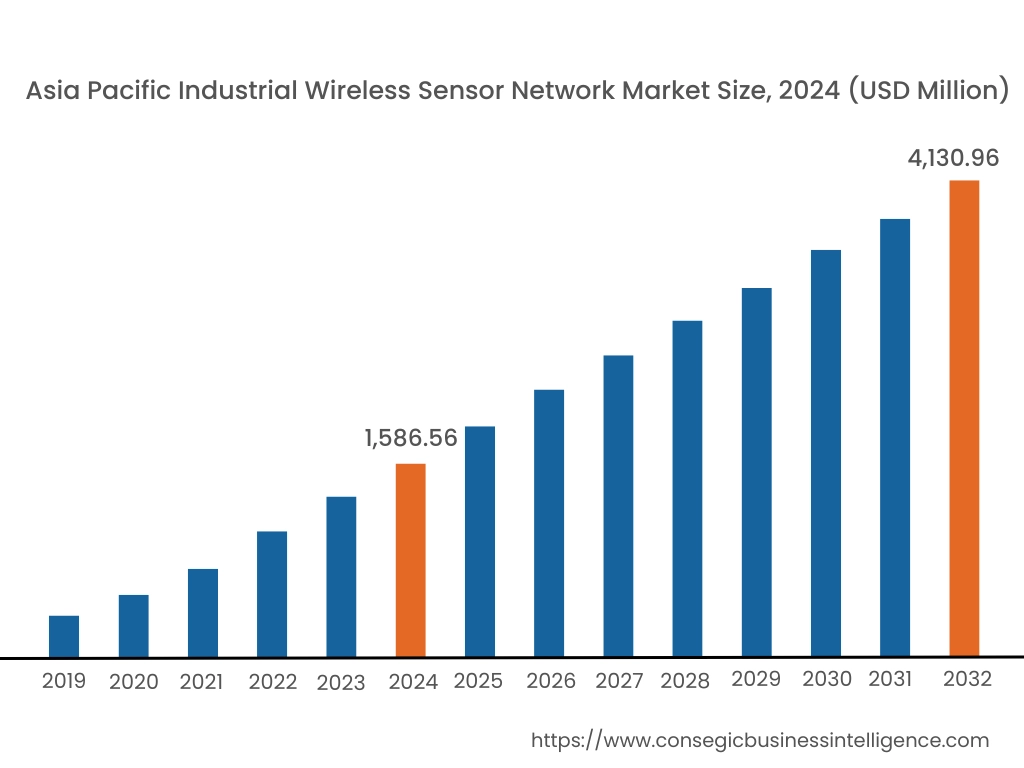
Asia Pacific region was valued at USD 1,586.56 Million in 2024. Moreover, it is projected to grow by USD 1,758.16 Million in 2025 and reach over USD 4,130.96 Million by 2032. Out of this, China accounted for the maximum revenue share of 32.8%. As per the industrial wireless sensor network market analysis, the adoption of wireless sensor network in the Asia-Pacific region is primarily driven by increasing government investments in industrial manufacturing, along with growing oil & gas, agriculture, and other industrial sectors. Additionally, the rising development of oil & gas infrastructure is further accelerating the industrial wireless sensor network market expansion.
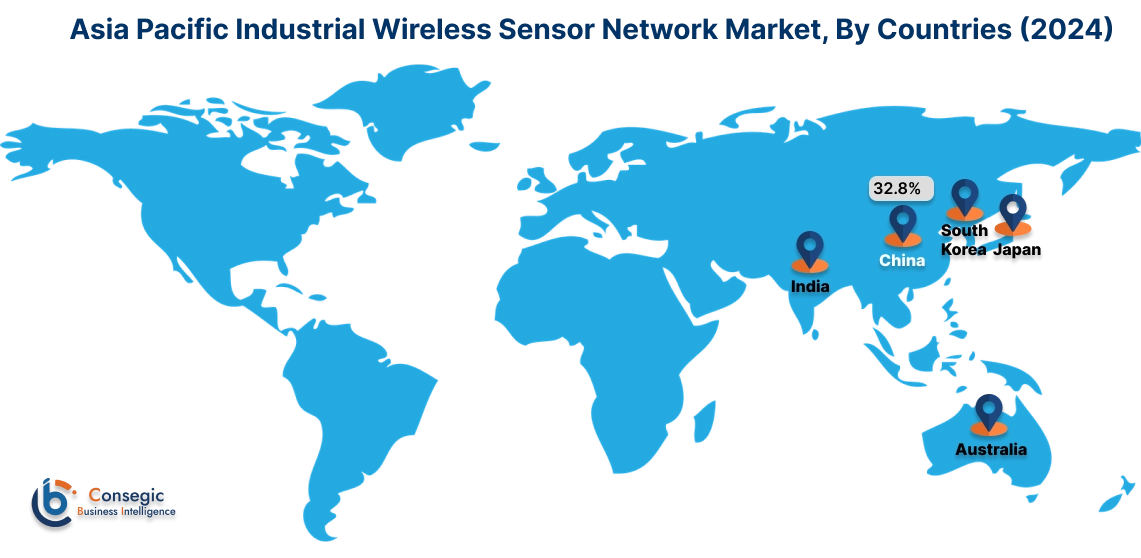
North America is estimated to reach over USD 5,391.98 Million by 2032 from a value of USD 2,153.79 Million in 2024 and is projected to grow by USD 2,378.86 Million in 2025. In North America, the growth of industrial wireless sensor network industry is driven by rising adoption of industrial automation and increasing development of smart industrial factories in the region. Similarly, the rising investment in development of industrial facilities including food & beverage, healthcare, and others is further contributing to the industrial wireless sensor network market demand.
In addition, the regional analysis depicts that the growing automotive and food & beverage sectors, along with favorable government measures for adoption of industrial automation are propelling the industrial wireless sensor network market demand in Europe. Further, as per the market analysis, the market demand in Latin America, Middle East, and African regions is expected to grow at a considerable rate due to factors such as increasing pace of industrialization, growing investments in development of oil & gas facilities, and rising adoption of industrial automation solutions among others.
Top Key Players and Market Share Insights:
The global industrial wireless sensor network market is highly competitive with major players providing products to the national and international markets. Key players are adopting several strategies in research and development (R&D), product innovation, and end-user launches to hold a strong position in the global industrial wireless sensor network market. Key players in the industrial wireless sensor network industry include-
- OleumTech (USA)
- VPL Infotech & Consultants (India)
- Honeywell International Inc. (USA)
- Analog Devices, Inc. (USA)
- ABB (Switzerland)
- HBK, Inc. (USA)
- Johnson Controls (USA)
- AquamatiX (UK)
- Hunan Rika Electronic Tech Co., Ltd (China)
- Advantech Co., Ltd (Taiwan)
Recent Industry Developments :
Mergers & Acquisitions:
- In January 2024, ABB acquired Real Tech for expand its strong presence in the water segment and complement its product portfolio. The acquisition enables better process control and continuous water quality assurance.
Industrial Wireless Sensor Network Market Report Insights :
| Report Attributes | Report Details |
| Study Timeline | 2019-2032 |
| Market Size in 2032 | USD 14,494.58 Million |
| CAGR (2025-2032) | 13.7% |
| By Component |
|
| By Sensor Type |
|
| By Technology |
|
| By End-User |
|
| By Region |
|
| Key Players |
|
| North America | U.S. Canada Mexico |
| Europe | U.K. Germany France Spain Italy Russia Benelux Rest of Europe |
| APAC | China South Korea Japan India Australia ASEAN Rest of Asia-Pacific |
| Middle East and Africa | GCC Turkey South Africa Rest of MEA |
| LATAM | Brazil Argentina Chile Rest of LATAM |
| Report Coverage |
|
Key Questions Answered in the Report
How big is the industrial wireless sensor network market? +
The industrial wireless sensor network market is estimated to reach over USD 14,494.58 million by 2032 from a value of USD 5,748.22 million in 2024.
What specific segmentation details are covered in the industrial wireless sensor network report? +
The industrial wireless sensor network report includes specific segmentation details for component, sensor type, technology, end-user, and regions.
Which is the fastest segment anticipated to impact the market growth? +
In the industrial wireless sensor network market, the level sensors is the fastest-growing segment during the forecast period due to growing oil & gas and water & wastewater management sector as well as increasing focus towards automation and smart monitoring system.
Who are the major players in the industrial wireless sensor network market? +
The key participants in the industrial wireless sensor network market are OleumTech (USA), VPL Infotech & Consultants (India), HBK, Inc (USA), Johnson Controls (USA), AquamatiX (UK), Hunan Rika Electronic Tech Co.,Ltd (China), Advantech Co., Ltd (Taiwan), Honeywell International Inc (USA), Analog Devices, Inc (USA), ABB (Switzerland) and others.
What are the key trends in the industrial wireless sensor network market? +
The industrial wireless sensor network market is being shaped by several key trends including trend towards adoption of advanced technologies for precise fluid and gas pressure monitoring as well as to detect leakages as well as increasing focus towards asset tracking and inventory management in the retail and e-commerce sector are the key trends driving the market.
